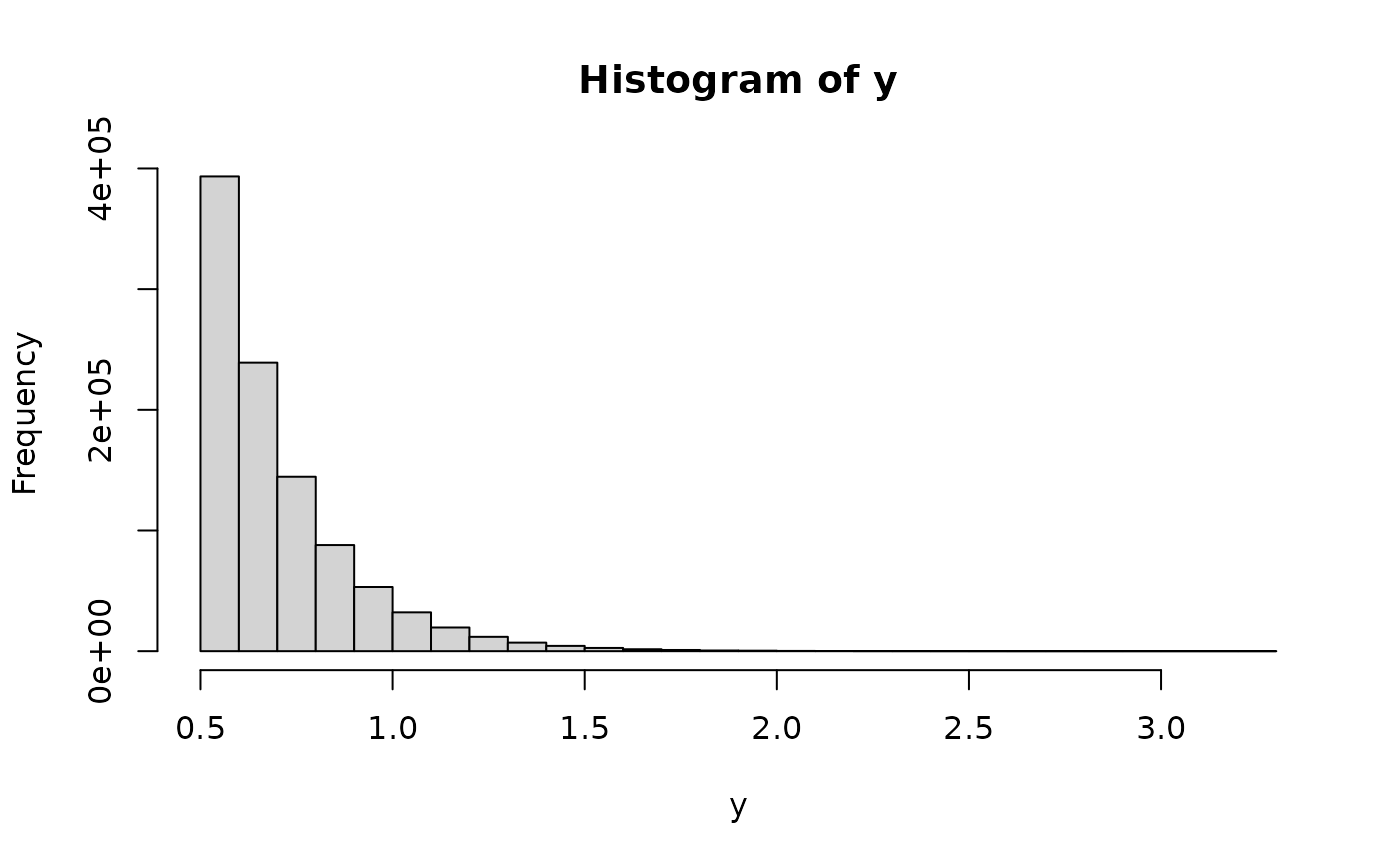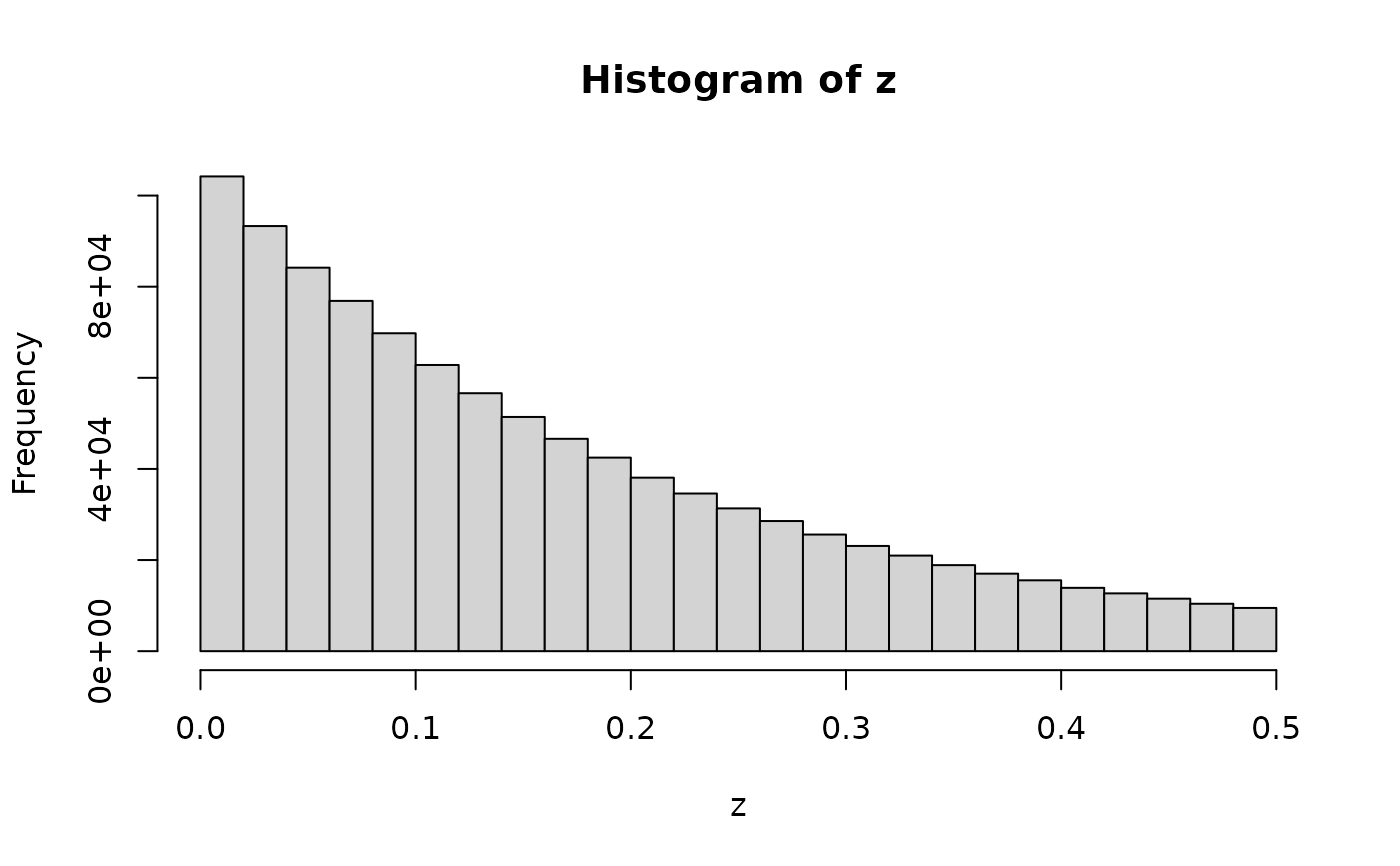Truncated Exponential Distribution
rtexp.RdThis generates random numbers from a truncated Exponential distribution, i.e. from `X | X > l` or `X | X < r` when `X ~ Exp(rate)`. The advantage here is that we guarantee to return exactly `n` numbers and without using a loop internally. This can be derived from the quantile functions of the left- and right-truncated Exponential distributions.
rtexp(n, rate, l = NULL, r = NULL)Arguments
- n
number of random numbers.
- rate
non-negative rate.
- l
positive left-hand truncation parameter.
- r
positive right-hand truncation parameter.
Value
The random numbers. If neither `l` nor `r` are provided then the usual Exponential distribution is used.


